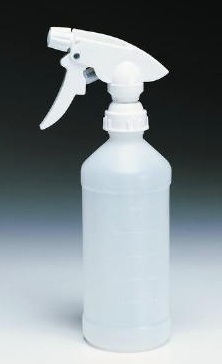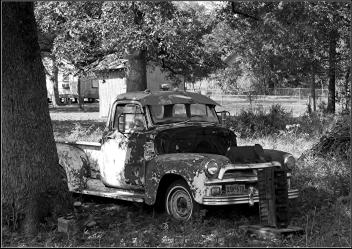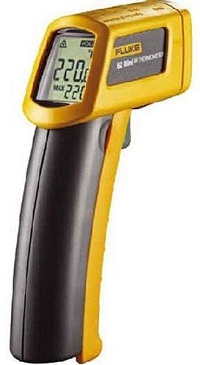I was very fortunate to grow up in a neighborhood and farm family full of excellent shade-tree mechanics. Mostly they were short on cash and long on resourcefulness.
I learned quite a lot by pestering these very talented home-gown mechanics.
Below are few of the high merit “pearls” they passed along to me:
1. Methods for finding a “dead” cylinder
Ignition or carb repairs are easier once you identify which cylinder is acting up. Here’s how the shade tree pros do it.
Brave method: Start engine from totally cold. Then touch each header pipe (near the cylinder head). Working quickly, you will want to get done within the first minute or two. Cylinders that are doing their share of the work will quickly get too hot to touch. The “dead” cylinder will warm up very gradually.

Coward’s method: All the same except you squirt water from an ordinary spray bottle instead of touching them. “Good” cylinders will quickly create steam and hiss when the water hits the pipe. The “dead” cylinder(s) won’t make steam or hiss for quite a while.
More tedious method: With a fully warm engine that is idling, unscrew each of the synchronization access port screws in turn. “Good” cylinders will show an obvious rpm drop when the sync screw is removed. Removing the sync screw on a “dead” cylinder won’t have nearly as much affect. Make sure that only one sync screw is out at any point in your testing.
High Tech variant method: Today, tool supply houses can sell you an inexpensive infrared temperature sensing gun. Armed with this tool, you can measure the actual exhaust header temperature without any fuss or bother. Aim for a measurement as close to the cylinder head as possible. Be aware that chrome plating will corrupt your measurements. The absolute temperature measurements aren’t very important. You’re simply looking for any large temperature variation between cylinders. Almost always, the “cool” cylinders are the ones that need further attention.
2. Night Arcing to check for failing ignition parts
Try idling your bike in a pitch dark area away from streetlights, etc. Remove the headlight / taillight fuses to make things even darker.
For obvious reasons do this outside …not in your darkened garage! As necessary, take precautions (like a fan) to avoid overheating your engine if your diagnostic session is prolonged (it shouldn’t be).
Arcing along the wires/caps will be very obvious on tired ignition components! You will be amazed at the very entertaining light show they create!
3. Drown your ignition troubles!
Another old trick …an ordinary spray bottle of water is also a useful tool for finding ignition “leaks.” With the engine idling simply start at the bottom and carefully work your way to the top wetting all ignition components with a light mist.
Again, do this outside for safety. Take precautions (like a fan) to avoid overheating your engine if your diagnostic session is prolonged (it shouldn’t be).
Ignition problems usually become fairly obvious when water is introduced.
4. Clearing Clogged Carb Jets
Sometimes clogged carb jets can be cleared with a simple trick …a variation of the infamous “Italian Tune-up.”
Warm up the engine completely. Remove the air cleaner, then raise the idle speed to about 3,000 – 4000 rpms using the curb idle screw. Next using a heavy shop rag or towel, “suffocate” the engine by completely blocking the intake opening. Remove the towel before the engine stalls. Repeat several times.
This procedure will temporarily create a very high vacuum situation. That can sometimes dislodge whatever might be blocking a jet and clear it.
This has worked for me on more than one occasion. It’s worth trying before you crack open the carbs!





Question; Is there any advantage to switching 1100 carbs onto a 1000? It was suggested to me by my mechanic.
Sure hope this message is redundant to the point of being a little annoying.
Thanks for the rebuild kit and video you made available for sale to me, as it was rewarding to rebuild the carbs on my ’78 GL1000 myself.
Much thanks also for the tech info you’ve made available as it will hopefully guide me through the process of getting my now favorite motorcycle “toy” tweaked and running well. Enough to warrant continued efforts to bring it to aesthetic levels meeting it’s potential…
Thanks again, Jim.
Glad to be of help.
Hi everyone just wondering if anyone ever came across a set of carbs that have small pops coming from the carb , I am thinking who ever cleaned the carbs soaked them in something wiping out the throttle seals ? glipsky@tampabay.rr.com
You’ll get more useful responses by posting that question here: http://www.ngwclub.com/forum/